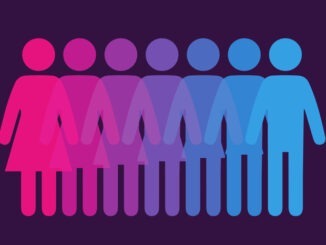
Schools play a vital role in supporting young people exploring their gender identity, especially during social transitioning. The Cass review calls for more robust research and highlights the importance of creating supportive environments for gender-diverse students
CREDIT: This is an edited version of an article that originally appeared on The Conversation
Medical transitioning, through hormone therapy or surgery, is just one route for transgender and gender non-conforming individuals to explore their identity. Many will “socially transition” before or instead of medically transitioning.
Social transitioning involves actions or expressions that align with a chosen gender different from the one assigned at birth. This can include changing appearance through clothing and hairstyle or choosing different names or pronouns. People may identify as agender, gender-fluid, or non-binary, and use gender-neutral pronouns such as they/them or newly coined ones like ze/zir. Those who feel they were assigned the wrong identity at birth may identify as transgender.
Social transitioning typically occurs at home, in schools, or workplaces rather than medical establishments. This makes schools particularly important for young people exploring their gender identity.
Creating supportive environments
Research suggests that social transitioning in early adolescence is not harmful in itself. However, an unsupportive environment where gender-diverse young people feel “othered” or bullied can lead to long-term negative wellbeing. A study of trans UK adults found that a supportive environment for social transition significantly decreases suicidal thoughts.
Social transitioning is also a key step in obtaining a gender recognition certificate (GRC). To be legally recognised as their acquired gender, individuals must provide evidence of a name or title change or change of gender marker for at least two years. A GRC cannot be obtained under the age of 18, so young people must have socially transitioned by age 16 to qualify at 18.
Role of schools and school staff
Educational institutions should foster positive, affirming environments for young people. Retired consultant paediatrician Dr Hilary Cass noted that rigid binary gender stereotypes can be unhelpful for young people, and that gender exploration is a normal process. Teachers, citing their duty of care, expressed a need for clear government guidelines on how to best support students who are socially transitioning.
The government recently closed a consultation on guidance for schools on gender-questioning children, with the draft guidance encouraging parental consent if a child wants to change their name or pronoun. However, teachers expressed concern that informing parents about a student’s social transitioning could pose safeguarding risks. Unlike disclosures about sexuality, informing parents about gender identity changes might lead to issues such as family rejection.
Ensuring student welfare
In interviews, school staff prioritised student welfare, discussing safeguarding incidents where students became homeless due to parental disapproval of their gender identity. They want students to feel safe, heard, and autonomous over their gender expression in school.
Staff also raised concerns about existing school policies being based on subjective beliefs of individual staff members rather than student wellbeing. They highlighted contradictions in how schools treat gender-diverse students. For example, name changes to nicknames or middle names are often accepted without question, but gender-diverse students face different standards imposed by head teachers.
Ultimately, schools should be places where students feel acknowledged, safe, empowered, and supported, whether they are navigating their sexuality or gender expression. This requires clear guidelines, a supportive environment, and policies focused on student wellbeing. Schools play a crucial role in the social transitioning process, providing a vital space for young people to explore and express their gender identity confidently and safely.



Be the first to comment